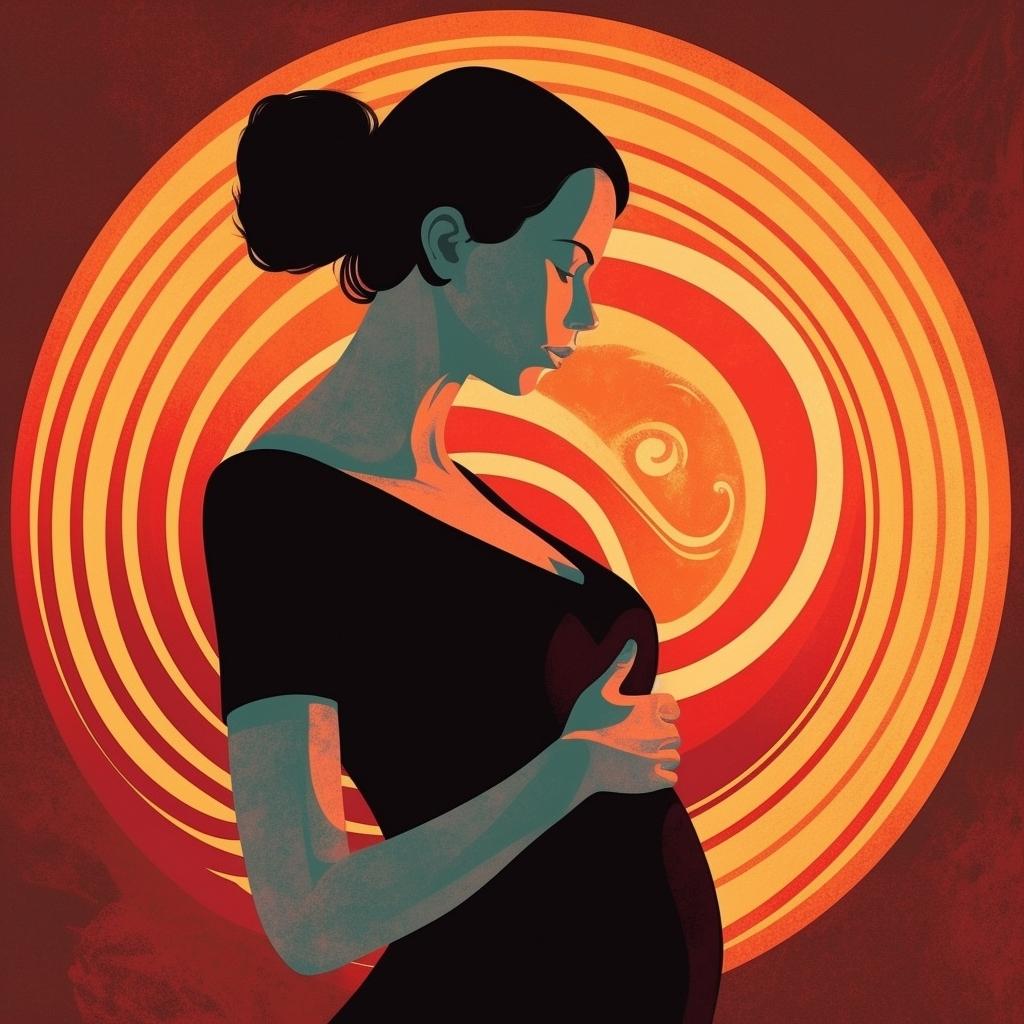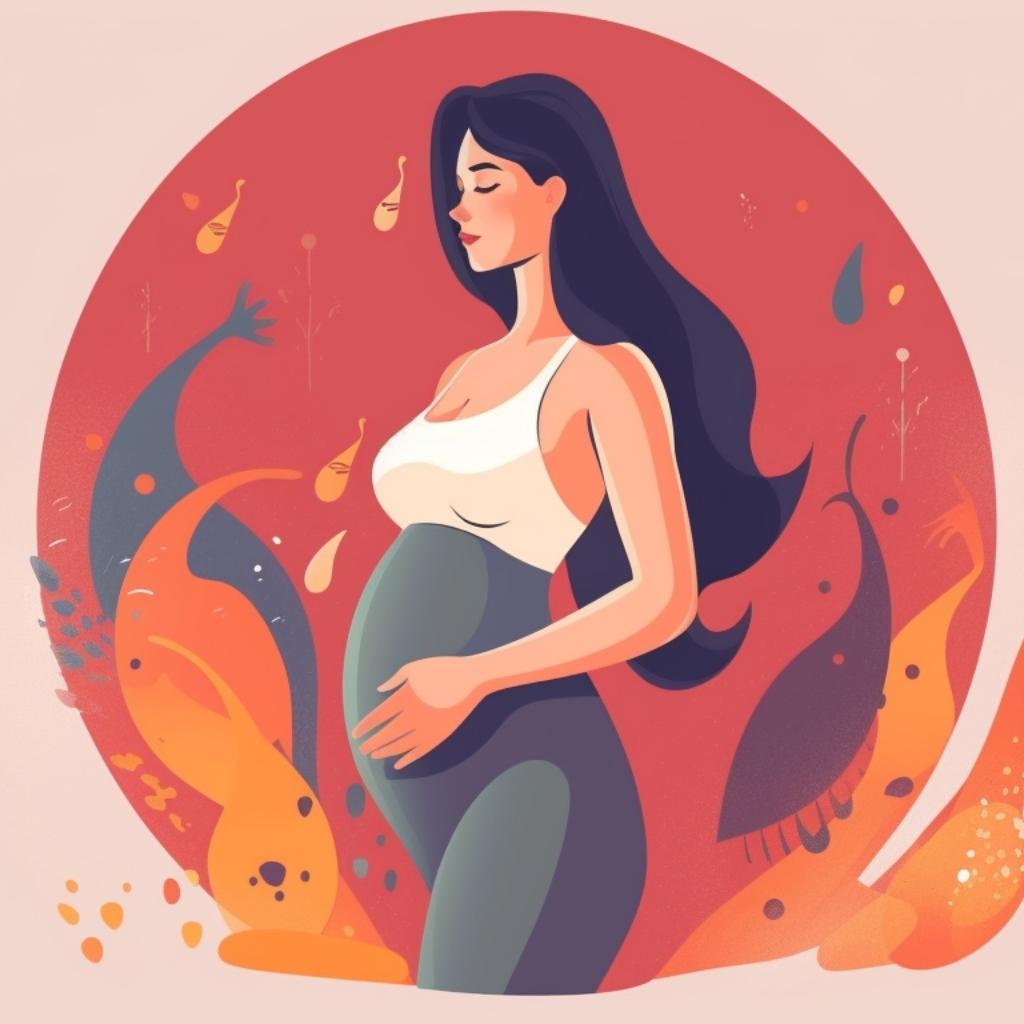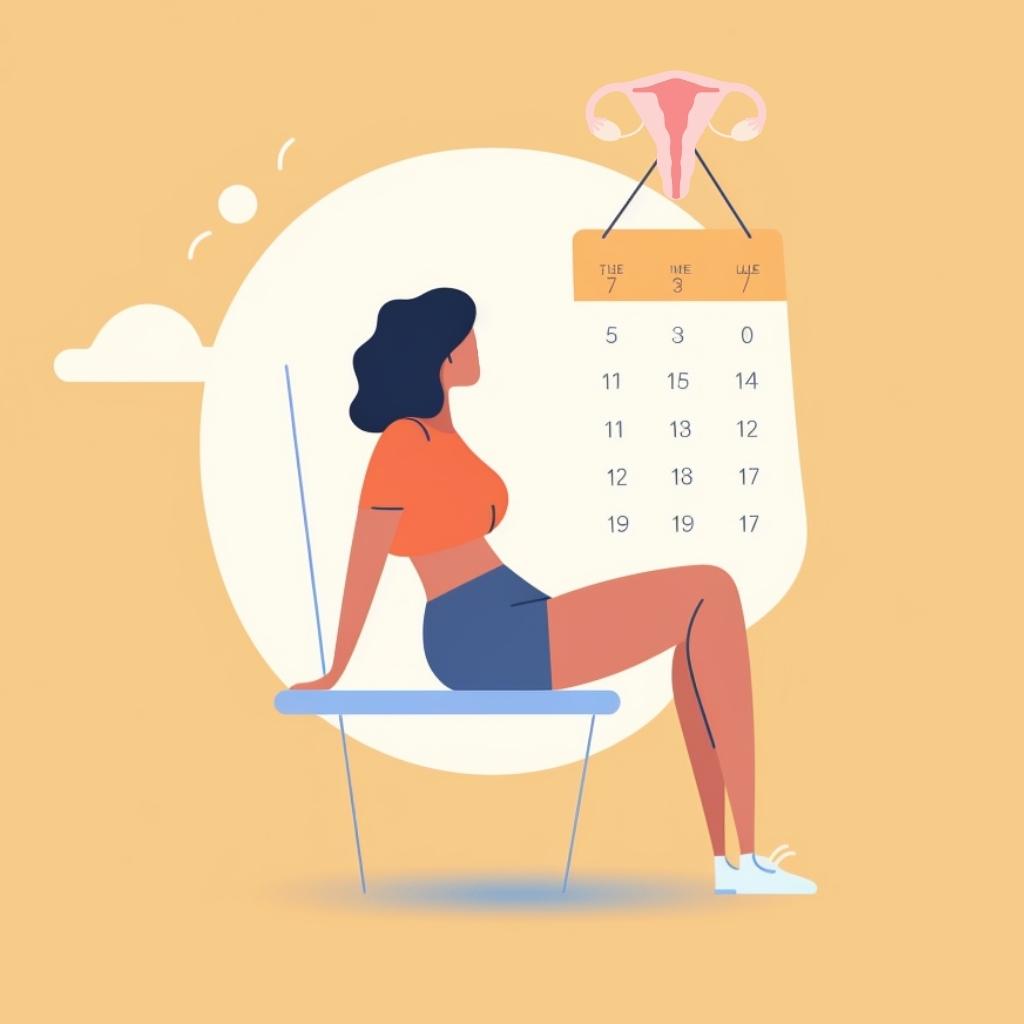PMS vs. Pregnancy Symptoms: Differences Between PMS and Pregnancy

Premenstrual Syndrome (PMS) refers to a collection of physical and emotional symptoms that occur in the days or weeks leading up to menstruation. These symptoms can vary in severity, including bloating, breast tenderness, mood swings, fatigue, and irritability. On the other hand, pregnancy symptoms are changes experienced by women during pregnancy due to hormonal fluctuations. These symptoms include nausea, breast tenderness, fatigue, frequent urination, and missed periods.
This article aims to understand the difference between PMS and pregnancy symptoms comprehensively. It will delve into the definition, prevalence, and characteristics of PMS and pregnancy symptoms. Furthermore, the article will highlight specific symptoms that can cause confusion and suggest ways to seek medical advice when needed.
What is PMS?
Premenstrual Syndrome (PMS) is a set of physical and emotional symptoms that occur in the days or weeks leading up to menstruation. It affects a significant number of women worldwide. The exact prevalence varies depending on the different populations studied. Still, it is estimated that around 75% of menstruating women experience at least some symptoms of PMS during their reproductive years (American College of Obstetricians and Gynecologists, 2019).

Common PMS Symptoms
PMS can manifest in various symptoms that differ in severity and duration among individuals. Common physical symptoms include bloating, breast tenderness, headaches, muscle aches, and changes in appetite. Emotional and psychological symptoms may include mood swings, irritability, anxiety, depression, and difficulty concentrating (Halbreich & Borenstein, 2003). It is important to note that the specific symptoms experienced by individuals can vary.
| Discover: What are Uncommon PMS Symptoms?
Hormonal Changes during the Menstrual Cycle
Hormonal fluctuations play a crucial role in the development of PMS symptoms. The menstrual cycle involves a complex interplay of estrogen and progesterone hormones. During the first half of the cycle, estrogen levels gradually rise, leading to the thickening of the uterine lining. After ovulation, progesterone levels increase and prepare the body for potential pregnancy. If pregnancy does not occur, both estrogen and progesterone levels decline, triggering the shedding of the uterine lining during menstruation. It is believed that the shifts in these hormones contribute to developing PMS symptoms (Halbreich & Borenstein, 2003).
Duration and Timing of PMS Symptoms
PMS symptoms typically occur in a week or two leading up to menstruation and subside once menstruation begins. The exact timing and duration of symptoms can vary among individuals. Some women may experience symptoms for a few days, while others may persist longer. It is essential to track the timing and severity of symptoms over several menstrual cycles to establish patterns and differentiate them from other conditions (American College of Obstetricians and Gynecologists, 2019).
| Read more: Why Am I Having PMS But No Period?
What are Pregnancy Symptoms?
Recognizing the early signs of pregnancy is important for individuals who suspect they may be pregnant. While taking a pregnancy test for confirmation is essential, certain early signs may indicate a possible pregnancy. These signs include a missed period, breast changes such as tenderness and enlargement, fatigue, nausea or morning sickness, increased urination, and changes in appetite (Butler Tobah, 2019). However, it is important to note that individual experiences may vary.
Hormonal Changes During Pregnancy
Pregnancy involves significant hormonal changes to support the development and maintenance of the pregnancy. The primary hormone involved is human chorionic gonadotropin (hCG), produced by the developing embryo and later by the placenta. The levels of hCG rise rapidly in the early stages of pregnancy and play a crucial role in supporting the pregnancy and regulating other hormones, such as estrogen and progesterone (Mayo Clinic, 2022).
| Learn more: 7 Foods to Avoid in Pregnancy + List of Prohibited Foods for Every Trimester

Common Pregnancy Symptoms
Pregnancy symptoms can vary among women, and some individuals may experience few or no symptoms at all. However, there are common symptoms associated with pregnancy. These include nausea or morning sickness, breast tenderness or sensitivity, fatigue, frequent urination, food cravings or aversions, mood swings, and a heightened sense of smell (Mayo Clinic, 2022). It is important to note that individual variations and other factors can also influence these symptoms.
Duration and Timing of Pregnancy Symptoms
Pregnancy symptoms can begin as early as one to two weeks after conception. The timing and duration of symptoms can vary among individuals. Generally, early pregnancy symptoms may last for several weeks or months, with some subsiding as the pregnancy progresses, while others may persist throughout the entire pregnancy. It is important to consult healthcare professionals for accurate assessment and guidance.
| Read more: Vegetarian And Pregnancy Risks: Vegetarian Foods To Avoid During Pregnancy In Each Trimester
PMS vs. Pregnancy Symptoms
Here are some of the key differences between PMS and pregnancy:
PMS vs. Pregnancy — Timeline
One of the fundamental differences between PMS and pregnancy symptoms lies in the timing and progression of the menstrual cycle and pregnancy. PMS symptoms typically occur in the days or weeks leading up to menstruation and subside once menstruation begins. In contrast, pregnancy symptoms arise after fertilization and implantation of the embryo, which occurs approximately 6-12 days after ovulation. These symptoms may persist throughout pregnancy (American College of Obstetricians and Gynecologists, 2019).

PMS vs. Pregnancy Symptoms — Nature and Intensity
While there may be overlapping symptoms, the nature and intensity of symptoms can differ between PMS and pregnancy. PMS symptoms primarily revolve around the changes in hormone levels during the menstrual cycle. They often include physical discomforts such as bloating, breast tenderness, headaches, and emotional changes like mood swings and irritability. Pregnancy symptoms, on the other hand, are influenced by hormonal changes related to pregnancy. They may include nausea or morning sickness, breast tenderness, and fatigue (Mayo Clinic, 2022).
PMS vs. Pregnancy Symptoms — Physical and Emotional Changes
Distinct physical and emotional changes can accompany PMS and pregnancy symptoms. PMS symptoms are often localized to the premenstrual phase and primarily related to the menstrual cycle. These symptoms may include acne, food cravings, water retention, and emotional sensitivity (American College of Obstetricians and Gynecologists, 2019). On the other hand, pregnancy involves more pronounced physical changes associated with the growth and development of the fetus, such as weight gain, enlargement of the abdomen, and the formation of the placenta. Emotional changes during pregnancy may include heightened emotions, excitement, and anticipation (Mayo Clinic, 2022).

Differentiating Factors for Accurate Identification
Accurately identifying the underlying cause of symptoms is essential. Several factors can help differentiate between PMS and pregnancy symptoms. Tracking the timing and progression of symptoms over multiple menstrual cycles can help establish patterns associated with PMS. However, a missed period is a common indicator of pregnancy, although it is not exclusive to pregnancy. A home pregnancy test or consult a healthcare professional is the most reliable way to confirm pregnancy (American College of Obstetricians and Gynecologists, 2019; Mayo Clinic, 2022).
Do you experience night sweats during your PMS?
Read our comprehensive guide, The Connection Between Night Sweats and PMS, to gain valuable information!
PMS vs. Pregnancy; Overlapping Symptoms
While PMS and early pregnancy symptoms can have distinct characteristics, some symptoms overlap between the two conditions. It is important to understand these overlapping symptoms to avoid confusion. Let us explore some of the commonly overlapping symptoms:
Nausea and Vomiting
Both PMS and early pregnancy can be associated with feelings of nausea and, in some cases, vomiting. While morning sickness is often considered a classic symptom of pregnancy, some women may also experience nausea as part of their premenstrual symptoms. The exact cause of nausea in both situations is not fully understood, but hormonal changes are believed to play a role (American College of Obstetricians and Gynecologists, 2019).
Breast Tenderness
Breast tenderness is another symptom that can occur in both PMS and early pregnancy. Hormonal fluctuations during the menstrual cycle and pregnancy can increase sensitivity and discomfort in the breasts. However, in early pregnancy, breast tenderness may be more pronounced and accompanied by other breast changes, such as enlargement and darkening of the nipples (Mayo Clinic, 2022).

Fatigue and Mood Swings
Fatigue and mood swings can be experienced during PMS and early pregnancy. Hormonal changes influence both conditions, leading to feelings of tiredness and emotional fluctuations. However, fatigue may be more pronounced in early pregnancy due to the increased demands on the body to support the growing fetus (American College of Obstetricians and Gynecologists, 2019).
Abdominal Cramping and Bloating
Abdominal cramping and bloating can be observed in both PMS and early pregnancy. These symptoms are often associated with hormonal changes and fluid retention. However, in early pregnancy, the cramping may be milder and accompanied by other signs, such as implantation bleeding or a missed period (Mayo Clinic, 2022).
It is important to note that while these symptoms can overlap, one or more of them alone is not enough to confirm pregnancy. Accurate identification requires considering the context and utilizing pregnancy tests or consulting healthcare professionals for confirmation.
| Also might be interesting: Menstrual Cramps vs. Pregnancy Cramps
Seeking Medical Advice

When experiencing symptoms of either PMS or early pregnancy, it is crucial to consult healthcare professionals for accurate assessment and guidance. While relying solely on self-diagnosis or anecdotal information may be tempting, healthcare professionals possess the expertise and tools necessary to provide a proper diagnosis and appropriate management options. They can help differentiate between PMS and pregnancy symptoms, address concerns, and ensure optimal reproductive health (American College of Obstetricians and Gynecologists, 2019).
To confirm pregnancy, healthcare professionals rely on various diagnostic methods. The most common method is a urine or blood test that detects the presence of human chorionic gonadotropin (hCG), a hormone produced during pregnancy. Home pregnancy tests are available for convenient use, but healthcare professionals can offer more accurate and sensitive tests. An ultrasound may sometimes be used to visualize the developing fetus and confirm pregnancy (Mayo Clinic, 2022).
“It is crucial to consult healthcare professionals for accurate assessment and guidance!“

Management Options for PMS Symptoms
For individuals experiencing significant PMS symptoms, healthcare professionals can provide management options tailored to their needs. Lifestyle modifications like regular exercise, a balanced diet, stress reduction techniques, and adequate sleep may help alleviate symptoms. In some cases, over-the-counter pain relievers or hormonal interventions, such as hormonal contraceptives or selective serotonin reuptake inhibitors (SSRIs), may be recommended to manage severe PMS symptoms (American College of Obstetricians and Gynecologists, 2019).
| Related: Foods for PMS
It is important to consult healthcare professionals to ensure accurate diagnosis, appropriate management, and personalized care based on individual circumstances. They can provide evidence-based recommendations and monitor changes or developments throughout the reproductive journey.
You should care about your emotional health, especially during pregnancy…
Read the article below and enhance your emotional self!
HealWiser’s Last Piece of Advice
Understanding the differences between PMS and pregnancy symptoms is crucial for individuals to interpret and respond to their bodies’ signals accurately. By recognizing the distinct characteristics, seeking professional guidance, and staying informed, individuals can take control of their reproductive health and well-being.
Combining the knowledge gained from this article with healthcare professionals’ guidance, individuals can confidently navigate the complexities of PMS and pregnancy symptoms and make informed decisions about their reproductive health.
Sharing your experiences can provide valuable insights and emotional support. So…
…share your experience with Heal Wiser and others in the comments section below this post.
Reference:






